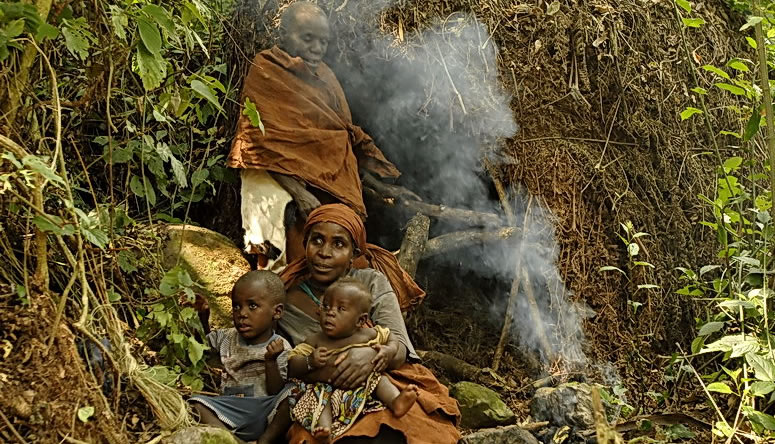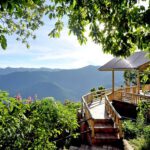Mgahinga National Park is situated within south-western Uganda and stretches for about 34 square kilometers, making it the country’s smallest Conservation Area but everything it offers is beyond its size. This site is where silver meets gold because it’s the only place in Uganda where both the Mountain gorillas and Golden monkeys are found.
As small as it is, Mgahinga National Park is a home to three of the eight Virunga Volcanoes (the Mufumbiro Mountains) including Sabinyo, Gahinga, and Muhabura as well as the famous Batwa Trail that gives tourists an insight into the life of the Pygmies-the original inhabitants of the Forest before it was gazetted into a National Park in 1991. Therefore, the jaw-dropping activities tourists who visit this Park can enjoy include;
Gorilla trekking
One of the reasons why Mgahinga National Park is popular is because of gorilla trekking tours and is part of the extensive Virunga Conservation Area that also comprises Volcanoes National Park in Rwanda and the Virunga National Park in the Democratic Republic of Congo. There is so far only one habituated gorilla family known as the “Nyakagyezi family”, thus only 8 gorilla permits are available daily. Participants are required to wear long-sleeved shirts, long trousers, strong waterproof hiking boots, and cotton socks and carry backpacks, snacks, drinking water, and a walking stick on the day of trekking.![]()
Golden monkey tracking
Mgahinga National Park is the only place in Uganda where Silver meets Gold because it’s the only Park where both Mountain gorillas and Golden monkeys are found. The endangered Golden monkeys are also habituated (for at least two years) and thus are able to be seen by tourists without them shying or running away. They are characterized by their golden bodies, cheeks, and tails with black limbs and beautiful crowns on their heads and tail-ends. Unlike mountain gorillas that are found on the upper slopes, Golden monkeys occupy the Bamboo forests and thus are easier to track but are more playful thus sometimes difficult to have clear sightings.
Nature walks or Hiking
Nature walks around the foothills of the Virunga Volcanoes offer tourists the once-in-a-lifetime opportunity to see numerous bird species, dense vegetation, Rugezi Swamp, and the spectacular views of the surrounding Lakes and Agricultural villages as well as farmlands.
The Batwa Trail
The Batwa were the original inhabitants of the dense forests of Mgahinga and lived as hunter-gatherers before they were displaced after it was gazetted into a National Park in 1991. They depended on the forest for shelter, food, and medicine but now live as beggars at the edges of the Forest, and the only time they enter the Forest is when taking tourists during the Batwa Trail. During this activity, they introduce tourists to their ancient lifestyles such as constructing grass-thatched houses, making fire by rubbing sticks, obtaining herbal medicine for treating ailments, and climaxed with a visit to the sacred Garama Cave where sorrowful traditional songs are sung by the local women.
Mountain or Volcano Climbing
As earlier mentioned, Mgahinga National Park is home to three of the eight Virunga Volcanoes (Sabinyo, Gahinga, and Muhabura) and all of them can be climbed by tourists, with each of them lasting a full day. The Peaks of these Mountains reward climbers with the jaw-dropping views of the other Virunga Volcanoes as well as Lake Edward, the Rwenzori Mountains, and the lush mist-covered Bwindi Impenetrable Forest.
Bird watching
Much as it is the smallest Park in the country, it rewards birders with magnificent views of over 117 species of birds and most of the trails take tourists through the Park’s most spectacular scenery especially in the valley between Sabinyo and Gahinga Volcanoes as well as through the dense Bamboo and montane forests where the outstanding Rwenzori Turaco can be spotted.
Other bird species you are likely to see in the Park include the Red-faced woodland warblers, Pin-tailed Whydah, Paradise flycatcher, Double-collared sunbirds, Rwenzori Batis, Blue-headed coucal, Kivu-ground thrush, black-headed waxbill, Doherty’s bush shrike, Dusky Turtle Dove, Rwenzori nightjar, Grey-capped warblers, Chubb’s Cisticola, the streaky seed-eater, Black kites and the Cape robin-chat among others.



